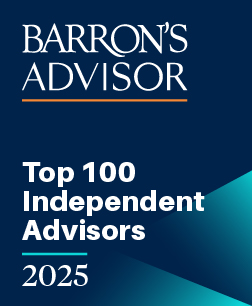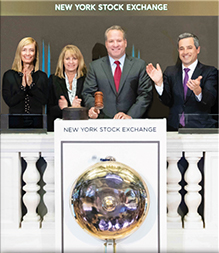When investors are seeking to maximize current income within a portfolio to live on, it is natural to seek out fixed income securities with higher yields. This is especially true today with interest rates near zero and high quality bonds offering little yield to maturity. Reaching for yield is a mistake we see often, and I will attempt to break down the main categories of higher yield securities and the risks involved.
High Yield Bonds
As the name suggests, high yield bonds are fixed income securities with higher yields than investment grade fixed income and are issued by companies with lower quality financials. These non-investment grade bonds can pay off to an investor in several different ways, most notably from the higher stated interest rates. The higher the rate, the more interest the bond holder will receive. However, these bonds are considered “junk bonds” for a reason, and it is important to consider the downside risks involved when investing in these securities. Though the interest rate is higher, that is for a reason – investors demand higher rates of return to bear the risk of a company defaulting on its bond obligations. When a company defaults, the bonds may fall precipitously in value. Additionally, just as a credit rating improvement can boost performance of the bond, a credit rating downgrade could prove devastating to a bond already considered in the “junk bond” category.
High yield bonds tend to have similar risk characteristics to those we see in equities. As such, replacing your high quality investment grade bonds with high yield bonds adds additional equity-like risk to your portfolio. If mitigating risks is a primary concern, it would be prudent to avoid high yield/high risk securities.
Emerging Market Debt
Developed economies around the world are posting extremely low to negative interest rates on government bonds. As a result, many investors have turned to the debt markets of less-developed countries, the “Emerging Markets,” whose governments are offering superior yield to their developed counterparts. While there are diversification benefits to adding Emerging Market Debt to the portfolio, and surely the greater yield is an added pick up, one must acknowledge the higher risk associated with these securities. Simply looking at the list of countries within EM debt should give a sense of the geopolitical risks involved investing in some of the least stable regions and countries of the world.
The value of the US Dollar also can weigh on the performance of these securities. Because many of these emerging market countries cannot borrow money in their own currency, they turn to the US Dollar to issue debt. As the dollar strengthens against their local currency, it makes it more difficult for that country to service the debt they issued, decreasing the value of the debt holding to the investor.
Preferred Stocks
Preferred stocks are often referred to as “hybrid securities” because they have features that put them somewhere between bonds and common stocks. They have steady dividends paid out in perpetuity but are typically taxed at the qualified dividend rate rather than as interest income for bonds. Unlike bonds, any skipped payments are not deemed defaults but accrue and are due before any common shareholders receive their dividends. Preferred stocks have a higher claim on assets relative to common shareholders, and their prices are less volatile than stocks. Sounds great, but we must consider the negatives of this investment vehicle.
First, preferred shareholders have a lower claim on assets than creditors and bondholders. Should a company declare bankruptcy, preferred shareholders will only receive a payout after all creditors and bondholders are paid. Secondly, and certainly the bigger risk, while preferred securities are less volatile than common stocks, they are more volatile than bonds. During the 2008-2009 Great Recession, the S&P 500 returned -33.3% for the 18 months ending June 2009 (source: Morningstar). US Treasuries returned +8.9% (source: ICE BofAML U.S. Treasury Index). Income investors who had turned to the higher yielding preferred shares saw their holdings drop -23.2% (source: ICE BofAML Fixed Rate Preferred Securities Index). Not quite the stable, sleep-well qualities an investor would expect from their fixed income allocation.
Lastly, preferred stocks are highly sensitive to interest rate changes. Since preferreds typically have very long maturities, and rate sensitivity rises as the maturity gets longer, preferreds typically are more sensitive than bonds. As rates increase, preferred stocks lose their value. While we expect rates to hold steady in the near term, the long-term picture is more difficult to assess. Given the volatile nature of rate policy when looking out ten years, the preferred stock’s performance is certainly less predictable than a high quality investment grade bond.
In this historically low interest rate environment, it would be easy to consider adding higher yield securities to the portfolio in lieu of traditional investment grade fixed income. But a smart and prudent investor must understand and consider the underlying risks associated with these securities before adding an allocation to his or her portfolio.
Click here to read more of my RetireMint articles. Follow me on Twitter or Linkedin.
This document is for educational and informational purposes only and does not constitute an advertisement or solicitation of any securities or investment services provided Mainstay Capital Management, LLC (“MCM”). This document should not be construed as investment, tax, or legal advice, or a solicitation, or a recommendation to engage in any specific strategy. MCM is an independent investment adviser registered with U.S. Securities and Exchange Commission. MCM specializes in workplace savings plan portfolio management and retirement planning advice for active employees and retirees. This document was prepared by MCM primarily based on data collected and analyzed by MCM. The opinions expressed herein are those of MCM alone and are for background purposes only. MCM does not purport the analysis to be full or complete or to constitute investment advice and should not be relied on. In addition, certain information contained herein or utilized to draw the conclusions contained herein has been provided by, or obtained from, third party sources. While MCM believes that such sources are reliable, it cannot guarantee the accuracy of any such information and does not represent that such information is accurate or complete. All materials and information are provided “as is” without any express or implied warranties by MCM. MCM charges its fee based on a percentage of assets under management, which creates an incentive and conflict of interest to increase assets in that account. Furthermore, MCM has two different fee schedules, and therefore has a conflict of interest when assets or accounts move from the lower fee schedule to the higher fee schedule. Opinions expressed are subject to change without notice and are not intended as investment advice or to predict future performance. Consult your financial professional before making any investment decision. Please see MCM’s Form ADV Part 2A and Form CRS for additional information.







